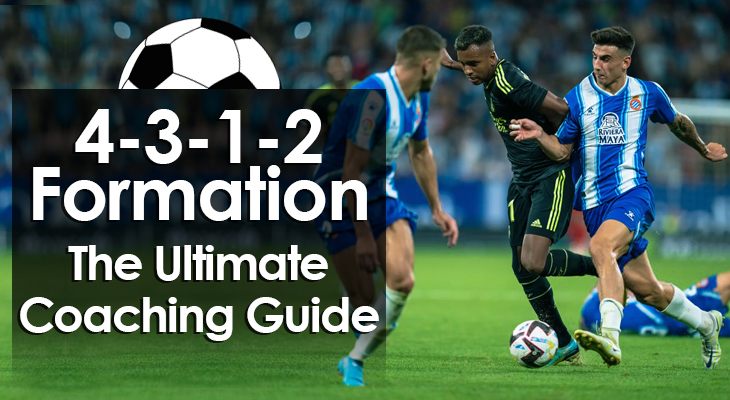4-3-1-2 Formation – The Ultimate Coaching Guide
As a coach, sometimes you may have to look to variations of popular shapes or unorthodox setups to get the best out of your team.
While you don’t need to reinvent the wheel to outwit the opposition, creativity can make all the difference.
The 4-3-1-2 formation is a shape used by coaches with particular player profiles in their squad that are hard to fit into more traditional lineups.
It’s extremely compact and narrow, with no recognized wide players other than the fullbacks.
Best suited to defensive and possession-based teams, it’s no surprise that José Mourinho experienced great success in this shape.
So too did Carlo Ancelotti with his phenomenal AC Milan side in the mid-2000s.
Although Mourinho and Ancelotti used very different strategies within their formations, both were centrally dominant and shipped very few goals.
In today’s article, I dissect the 4-3-1-2 formation, explain how it works, and show you how you can set up your team in this effective shape.
What is a 4-3-1-2 Formation?
The 4-3-1-2 formation is a modified version of a standard 4-3-3.
Instead of playing with two wingers and a single striker in the front line, there are dual strikers and a center attacking midfielder sitting just behind them.
Compared to most popular formations in modern soccer, the 4-3-1-2 formation is very narrow, with the only real width coming from the fullbacks.
Naturally, playing with attacking fullbacks is important to provide balance to the shape.
When play stagnates centrally, the space will be available on the wings, so your fullbacks should also be skilled on the ball and possess the capabilities to create chances in the final third.
Defensively, the formation is rock solid with a central focus and powerful spine from back to front.
While in possession, the team can knock the ball around with relative ease because of all the passing options available with the tight midfield cluster.
The biggest challenge in this formation is creating goal-scoring opportunities.
The narrowness of the shape limits attacking avenues to the central area.
This places a lot of emphasis on the abilities of the center attacking midfielder (CAM) and the dual strikers.
But, with the right players at your disposal, this formation can be highly effective.
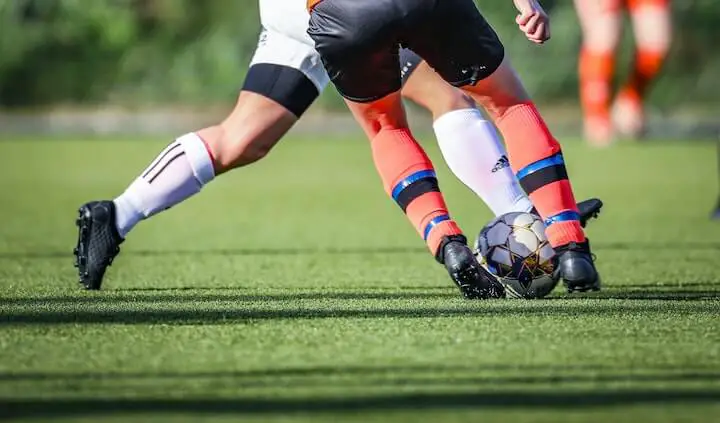
4-3-1-2 Formation Strengths
#1. Compact Midfield Trio
The main strength of this shape is that its compact midfield three puts your team in a position to win the central battle.
The combination of players comes down to the coach.
However, one of the most effective setups is to play a box-to-box midfielder on either side of a deep-lying playmaker.
Energetic midfielders ensure the midfield is tough to bypass and frees up time and space for the more creative player to have an impact.
Since the shape is so narrow, you’ll need a technically savvy deep-lying playmaker to orchestrate attacks, dictate the tempo, and break the opposition’s defensive lines.
Out of possession, the midfield three should be narrow and compact.
However, when on the ball, the right and left center midfielders can drift into wider channels to open up the field and create a more dynamic attacking threat.
#2. Excellent Option for Possession-Based Teams
The 4-3-1-2 is a slow-burning formation that allows your team to chip away at opponents through a methodical, possession-based style.
Defenders always have passing options to their fullbacks, midfielders, or strikers.
And, unless your opposing team commits multiple attackers forward, the defenders can hold onto the ball for long periods themselves.
If the CAM drops deep, the four midfielders can create passing triangles, running the opposition ragged.
Retaining the ball for the majority of the game often leads to openings in the final 15 to 20 minutes as the opposing players begin to fatigue.
#3. Central Dominance
Unless your opponent goes like-for-like with their formation, your team will enjoy central dominance over the entire field.
The midfield trio creates numerical advantages and overloads, allowing your team to progress the ball methodically and consistently.
In defense, there is virtually no room in the middle channel.
This central focus forces your opponents wide, making it more difficult for them to create clear-cut chances.
When executed correctly, this suffocating style is frustrating to play against and often causes opponents to make mistakes.
With seven players behind the ball in defense, this formation is extremely difficult to break down.
Your team will have all positions covered and the midfield players can offer support – and even double up – on the opponents’ most dangerous players.
Once your team gets the lead, the midfield can drop a little deeper, adding further defensive solidity.
#4. Dual Strikers Offer a Direct Approach
While the most effective way to play in this shape is to build from the back, the double striker combination provides a direct route to goal.
If opponents go player-for-player with the midfield three, the defenders often have more time on the ball.
Rather than play low-percentage passes into a congested midfield, defenders can look for over-the-top balls toward the strikers.
Striker partnerships are somewhat of a rarity in the modern game and are a nightmare for center backs.
Your forwards will find themselves in 1v1 situations frequently throughout a game so if they can get the better of their marker on a few occasions, they will create chances.
#5. Tactically Versatile
Some teams struggle to create chances due to the linear focus of the formation.
Fortunately, with a few tactical changes, you can seamlessly adjust to a range of formations to establish width or find a better balance.
The easiest way to change the whole dynamic of the team is to revert to a traditional 4-3-3.
However, with substitutions, the formation is adaptable to a wide range of other shapes.
4-3-1-2 Formation Weaknesses
#1. Lack of Width
The lack of width is an obvious weakness of this shape as it limits attacks to central channels.
Naturally, the central focus can be advantageous against a team with one or two center midfielders.
However, since most modern teams play with midfield threes, having an out ball along the sidelines is sometimes necessary.
So, in reality, to enjoy consistent success in this shape, you need to have top fullbacks who can cover the length of the field for 90 minutes in every game.
Moreover, they must be fit enough to do this without sacrificing their defensive or offensive duties.
#2. Fullbacks May Be Targeted
While marauding fullbacks help add balance to your offense, they can cause vulnerability defending.
Regardless of how fit they are, your fullbacks can’t be in two places at once.
So, if an attack breaks down while they’ve pushed on, your opponents may target the space they leave behind.
So, in transition, you’ll need to ensure your midfield and center backs shift across to cover any gaps left by your fullbacks.
#3. Requires Significant Squad Depth in Midfield
If you don’t have a deep squad with a host of midfielders to choose from, you can forget about playing in a 4-3-1-2.
All players won’t be fit at all times, so you need to have additional players to fill in or rotate throughout the season.
Otherwise, you’ll be forced to compromise and use players in unfamiliar positions.
Although this is okay once in a while, it’s not a consistent key to success.
#4. Central Congestion
With so many players occupying central positions, the midfield can become clogged.
Coaches must teach correct spacing and positioning in possession, out of possession, and during transitions to facilitate fluidity in this formation.
Essentially, the 4-3-1-2 formation requires specialty midfielders to function fluidly.
In particular, you need a quality CDM or deep-lying playmaker, as well as an elite CAM.
These roles are key to making the team tick.
#5. Relies on Individual Creativity
Ultimately, creating goalscoring opportunities comes down to the abilities of your CAM and striker combination.
It’s imperative to have highly skilled attackers, capable of creating chances among themselves.
That said it may take a little time for your team to gel in this shape so be sure to have patience.
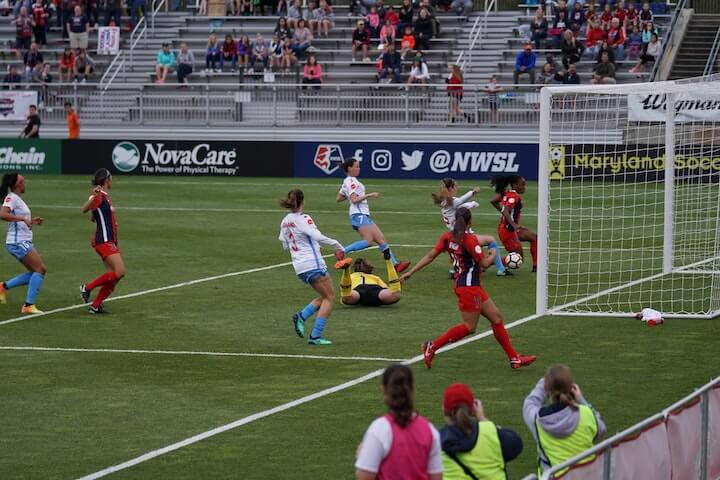
How to Play the 4-3-1-2 Formation
Essentially, there are two ways to implement the 4-3-1-2 formation successfully:
Ultra-defensive with high energy output
Possession-focused with technically savvy players in all positions
The general idea of the ultra-defensive approach is to keep things tight, prevent your opponents from scoring, and outwork them for 90 minutes.
In a possession-based style, you gradually wear down the opposition team and carve them open with superior technical players.
4-3-1-2 Formation Setup
Regardless of how you play, the core shape remains the same, with five lines of players.
This formation covers all core areas of the field and the half spaces.
Compact back four
Defensive midfielder or deep-lying playmaker
Two center midfielders
Central attacking midfielder or number 10
Dual strikers
Attacking in the 4-3-1-2 Formation
The key to attacking in the 4-3-1-2 formation is having certain types of players in pivotal positions.
While it’s always beneficial to have top defenders and elite strikers, the most important positions in a 4-3-1-2 are in the midfield.
If you can win the midfield battle, the game is already half-won.
1. Break the Lines of Play with Deep Playmakers
The 4-3-1-2 formation is designed for teams that build from the back.
It relies on having skilled passers who can break through defensive lines with vision and crisp passing.
Since there is very little natural width in the shape, you’ll need playmakers in midfield.
Deep-lying playmakers can thread balls through the midfield or strikers, allowing them to pick up the ball in dangerous positions.
Without having competent pacers in midfield, you’ll struggle to break through a mid-block.
2. Play Through the CAM
The most important cog in the machine is the CAM, which acts as a link from defense to attack.
A creative attacking playmaker is essential to make use of possession and set up chances.
Your team should be feeding the CAM at every opportunity.
With two strikers to work with, the CAM should have no trouble creating high-percentage goalscoring opportunities for the team.
3. Exercise Patience
As alluded to earlier, the 4-3-1-2 formation is a slow burner.
The narrow focus can mean that you need to grind away methodically at your opponent, especially against strong teams.
It’s important to exercise patience with this tactical setup and wait for the chances to come.
As the game goes on, start to utilize the fullbacks in more advanced areas of the field, stretching opponents and creating more space for the strikers.
Defending in the 4-3-1-2 Formation
The starting positions of all players give this formation defensive robustness.
With so many players condensed in the middle of the field, it’s difficult to penetrate.
However, there are certain tactics that can help you get the most out of this shape from a defensive standpoint.
The setup alone isn’t enough to prevent a talented team from scoring against you.
1. Use the Midfield as the First Line of Defense
With the 4-3-1-2, winning the midfield battle is fundamental to victory.
While you can use your dual strikers to launch a high press, the default defensive structure of your team should be a mid-block.
This means using your midfield trio as a defensive shield and the first line of defense.
The most common approach is to have your center midfielder sit deep, just ahead of the backline.
On either side of them, you should have high-energy midfielders to squeeze, tackle, and block off the passing lanes.
This approach helps stop attacks before they can progress.
2. Force the Opposition Wide
With a compact midfield and a solid four-player backline, opponents will struggle to break through your team through central channels.
This will force the opposition into wide areas where you can defend more comfortably.
If your opponents double up on the wings, drag one midfielder over and shift the rest of the midfield across to create more solidity.
3. Cover the Wings in Transition
The main defensive weakness in a 4-3-1-2 formation is in transition, particularly on the wings.
So, you must instruct your midfielders to provide cover when the fullbacks go forward.
For example, if the right fullback is in the attacking third of the field, the right-sided center midfielder (RCM) should slot into the right channel behind them.
This blocks off an immediate pass into this area of the field if the ball is turned over.
Even if the RCM can’t intercept the ball, their presence slows the counterattack, giving your team time to recover.
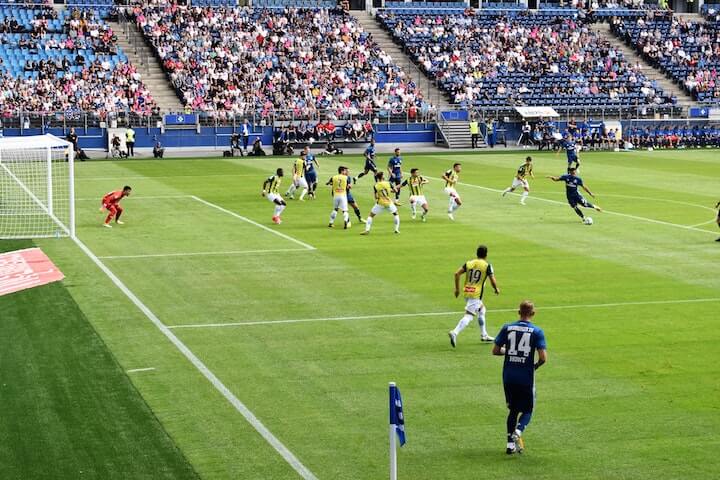
Individual Position Responsibilities
Goalkeeper
Most coaches seek out a sweeper keeper, a ball-playing stopper, or a combination of the two.
Since this shape doesn’t necessarily benefit from having a high defensive line, a ball-playing goalkeeper is more beneficial.
The ‘keeper can contribute to the build-up play and acts as a useful passing outlet under a high press.
Center Backs
With ample cover in front of them, the formation offers good protection for center backs.
The biggest goal threat comes from the wings.
This means the centerback pairing should dominate in the air and demonstrate good positioning and anticipation.
As they will likely be the first receiver from goal kicks, it’s important for the centerbacks to be competent on the ball.
Fullbacks
Fullbacks often play a minor role in a team when compared to center backs or attacking players.
This is NOT the case with a 4-3-1-2.
The right backs and left backs are responsible for providing width in both attack and defense.
Doing so requires a good all-around skillset and impeccable stamina.
Defensively, the fullback’s job is simple:
Win 1v1s
Mark the opposition winger
Cover the back post
Complications begin when fullbacks start going forward…
If the team is struggling to create through the center, the fullbacks must push on to stretch the opponents and force chances from wide areas.
However, this leaves holes in the defense that opponents can exploit with counterattacks.
The fullbacks must be sharp in transition and extremely fit to make recovery runs.
Center Defensive Midfield/Deep-Lying Playmaker
A quality deep-lying playmaker can really make this formation tick.
The numbers in midfield afford them the freedom to roam and find pockets of space from which they can dictate the play.
Players like Andrea Pirlo could basically run a game from this spot.
They collect the ball from the center backs before switching the play, making line-breaking passes, or simply keeping the ball moving with a short pass.
While good defensive qualities are a bonus, the compact midfield eases the individual responsibilities of this player when the opponents are in possession.
Left and Right Center Midfielders
The right and left center midfielders play a key role on either side of the playmaker, linking the play with passing triangles and movement.
Both players should offer a little bit of width to create space and prevent congestion.
When playing for Juventus in the left center midfield role, Paul Pogba used to venture all the way to the left wing where he was most effective.
If you give your midfielders freedom to push wide, it’s imperative that the other two players sit back and provide cover.
In most 4-3-1-2 setups, coaches opt for box-to-box players in the right and left midfield roles to offer balance and energy.
All-rounders are typically the most complementary players to a deep-lying playmaker.
They should have the capability of receiving the ball under pressure and doing the midfield dog work.
Center Attacking Midfielder
Virtually every attack goes through the center attacking midfielder (CAM) and their role in chance creation can’t be overstated.
If your CAM isn’t firing, your team may struggle to break down the opposition's defense.
The CAM must find gaps in tight spaces to unlock defenses.
Dribbling abilities, superior vision, and the ability to shoot from distance are other useful characteristics of a CAM.
The CAM should also develop a strong relationship with the strikers to understand their movement patterns – where they like to receive the ball, and the types of runs they make.
There isn’t necessarily a blueprint for a CAM, however, you must use one that suits your style of play.
Strikers
There’s a lot to love about a two-player strike force.
They double the trouble for opposition centerbacks and keep defenses busy at all times.
The strikers and the CAM essentially work as an attacking trio, often interchanging positions to force defenders out of position.
Many attacking duos make diagonal runs and occasionally come short, creating gaps in the opposition's backline for teammates to run into.
When the ball goes out wide, both strikers should take up good positions in the box, anticipating a cross.
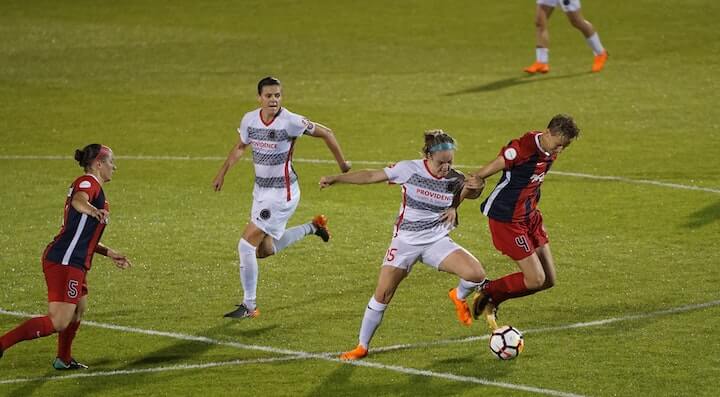
How to Beat a 4-3-1-2 Formation
No formation is unbeatable and just like any other shape, the 4-3-1-2 has its shortcomings.
If you’re preparing your team to play against a team with this compact setup, here are three ways to beat it.
Target the Deep-Lying Playmaker
One highly effective tactic for stopping a team in the 4-3-1-2 is to “man-mark” the deep-lying playmaker.
Essentially, this is like playing a CDM but in the opponent’s half of the field.
By limiting their influence on the game, you disrupt the entire flow of the team.
Pack the Midfield
For the most part, this formation relies on dominating the middle of the park.
By packing the midfield, you restrict space and make it harder for the influential players to have an impact.
This tactic is not pretty but it can be highly effective and turns the game into somewhat of a dogfight.
Hit the Wings
The clear weakness in this formation is on the wings.
Exploit this by deploying fast-wingers that excel in 1v1 situations.
This pins the fullbacks back and forces other players to provide cover.
By sacrificing an extra midfielder to cover, space opens up in other areas.
Conclusion
As a shape favored by managerial giants, José Mourinho and Carlo Ancelotti, the 4-3-1-2 formation has a proven pedigree at the highest level of competition.
If you have the right player profiles at your disposal, this tactical approach can be very fruitful.
At the very least, it should instill defensive stability, making your team extremely hard to beat.

